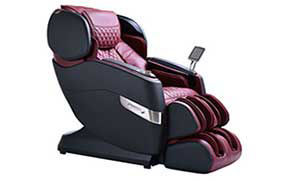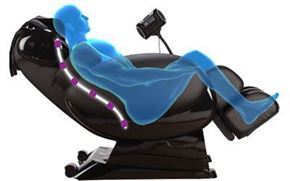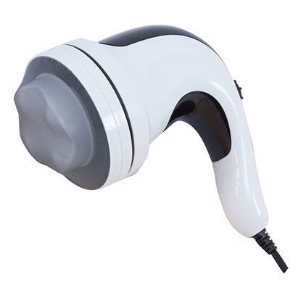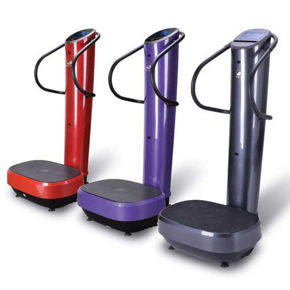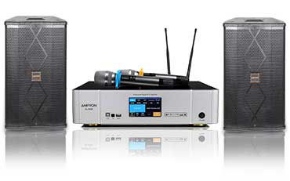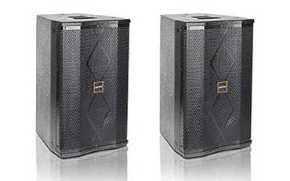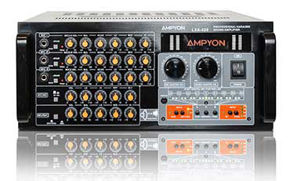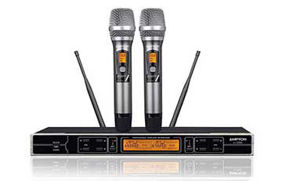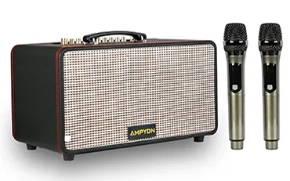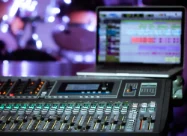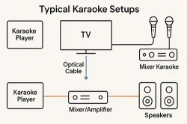English
Karaoke Blogs, News & Promotions
Sort by
Best Apartment Karaoke System: Quiet, Compact, Ready to Sing
-Friday, 15 August 2025
Looking for the best karaoke system for an apartment—one that won’t take over your living room or get you in trouble with the neighbors? This 2025 buyer’s guide focuses on low‑noise, small‑footprint solutions you can enjoy at modest volumes, with simple TV integration and tidy cable management. Table of Contents — Click to Expand What Makes a Karaoke System “Apartment‑Friendly”? TV integration...
next...
The Ultimate YouTube Karaoke Setup: TV, HDMI, Optical & Latency Fixes
-Friday, 15 August 2025
The Ultimate YouTube Karaoke Setup: TV, HDMI, Optical & Latency Fixes — a practical, engineer‑level guide to wiring, settings, and troubleshooting so you can sing on‑beat with clear, punchy sound and minimal lip‑sync distraction. Table of Contents (click to collapse) Why YouTube Karaoke Suffers Lip‑Sync Problems ARC vs eARC, Optical (S/PDIF) & PCM vs Bitstream—What Matters for Karaoke Wiring Playbooks...
next...
The Complete Mixer & DSP Guide for Karaoke: Analog vs Digital vs Hybrid
-Friday, 15 August 2025
Karaoke pushes a mixer in ways a typical band gig doesn’t: rapid singer changes, hot handheld mics in front of loud speakers, backing tracks that jump in loudness, and a room that can turn harsh as the night gets lively. Should you run an analog mixer, go fully digital, or build a hybrid chain with dedicated DSP? This complete guide explains each option in plain language, shows where DSP actually...
next...
UHF vs. VHF vs. 2.4GHz: The Ultimate Wireless Karaoke Microphone Guide
-Thursday, 14 August 2025
Choosing a wireless karaoke microphone is harder than it looks. “UHF,” “VHF,” and “2.4 GHz” aren’t just labels—they’re different radio neighborhoods with different rules, crowding, range, and reliability. This ultimate guide explains each band in plain language, shows how they behave in homes, bars, and KTV rooms, and gives you field‑tested checklists so singers sound confident and dropouts stay off...
next...
dB vs dBFS vs SPL vs LUFS — What each means and how it affects karaoke
-Wednesday, 13 August 2025
A practical, engineer-friendly guide to dB, dBFS, SPL, and LUFS for karaoke. Learn what each meter really measures, where it sits in your signal chain, and the simple targets that keep vocals clean, rooms comfortable, and uploads consistent. Table of Contents TL;DR Why these four numbers get mixed up 1) dB — the building block 2) dBFS — the ceiling of digital audio 3) SPL — the volume in the room...
next...
How Many Watts Do I Need for Karaoke? A Practical Power & Room-Size Chart
-Thursday, 14 August 2025
Wondering how many watts for karaoke you actually need? This guide translates specs into plain English, gives you a simple formula you can trust, and includes a practical power & room‑size chart you can bookmark and link to. Table of Contents TL;DR Why “watts” aren’t the whole story RMS vs Peak vs PMPO (ignore marketing noise) Speaker sensitivity & how power becomes loudness Choose your loudness...
next...
Understanding dB vs Watts in a Karaoke System: What’s the Real Difference?
-Sunday, 03 August 2025
When shopping for a karaoke system or setting up your own at home, you're likely to come across two terms repeatedly: watts (W) and decibels (dB). These technical terms appear in product specs for speakers, amplifiers, microphones, and more. But what do they really mean, and how do they affect your karaoke experience?
This blog will demystify watts and decibels, explain their roles in sound reproduction,...
next...
Portable Karaoke Systems vs. Full-Size Karaoke Setups: Which One Should You Buy?
-Tuesday, 08 July 2025
Karaoke brings people together — whether it’s a Friday night at home with family or a full-blown celebration with friends. But choosing the right karaoke system is a big decision. In 2025, buyers have two main options:
Portable karaoke systems – compact, mobile, and easy to use
Full-size karaoke setups – powerful, professional, and customizable
Each has distinct advantages and limitations...
next...
Step-by-Step Guide to Connecting HDMI and Optical Inputs for Karaoke
-Friday, 25 July 2025
Introduction: Why Proper Connections Matter
Setting up a karaoke system isn’t just about plugging in a microphone and turning up the music. To get the best sound quality—whether for home parties, family gatherings, or even small business events—how you connect your audio and video sources matters a lot. HDMI and Optical (also called Toslink or SPDIF) are two of the most important modern connections...
next...
Troubleshooting Common Karaoke Problems: Feedback, Poor Sound, No Connection
-Friday, 25 July 2025
Nothing ruins a karaoke night faster than technical difficulties. Whether you're hosting a party, operating a professional karaoke venue, or simply enjoying karaoke at home, encountering problems like audio feedback, poor sound quality, or connection issues can disrupt your experience. Fortunately, many of these common problems can be resolved quickly with the right troubleshooting techniques. In...
next...
- 1
- 2


